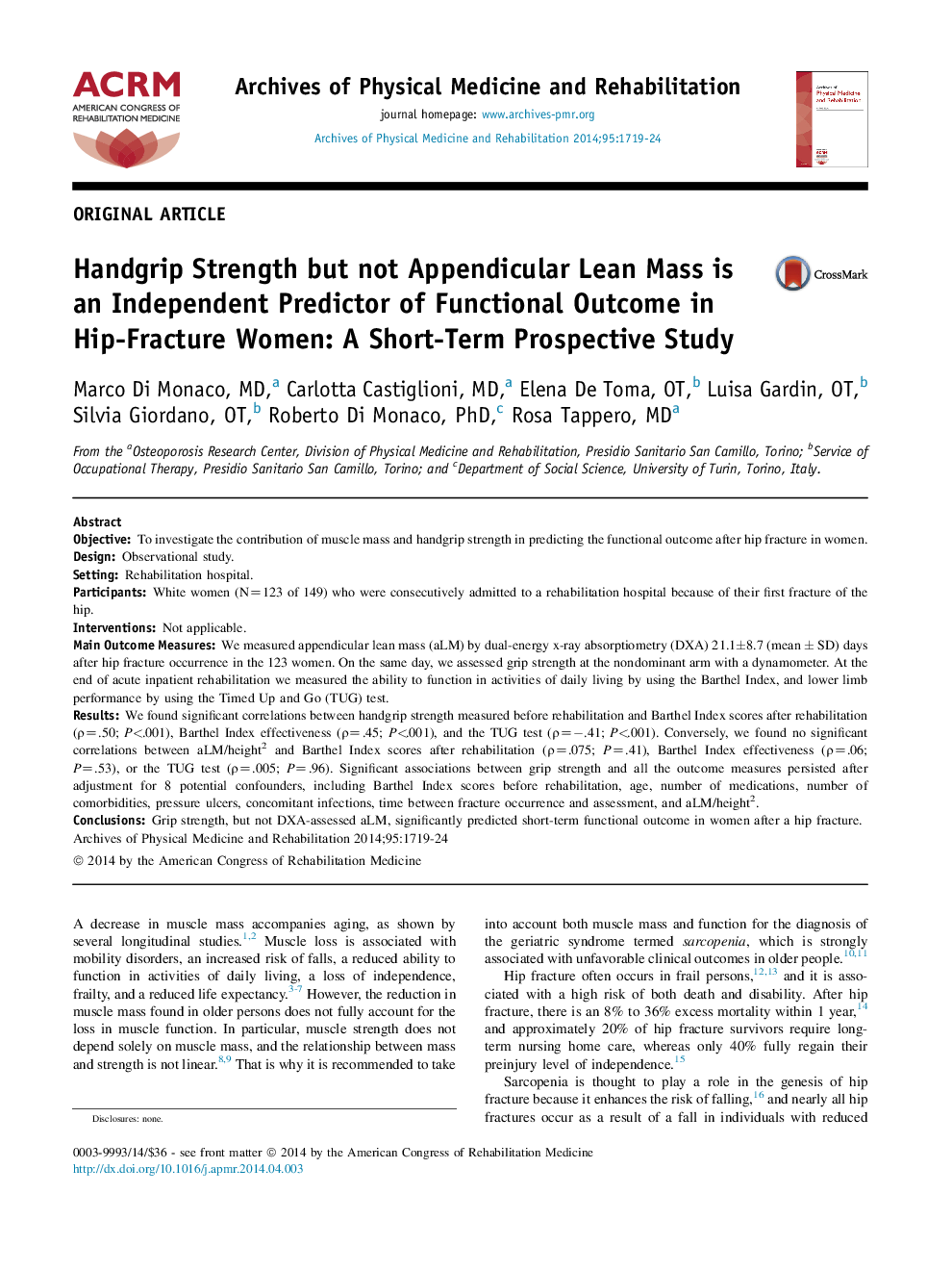| Article ID | Journal | Published Year | Pages | File Type |
|---|---|---|---|---|
| 3448859 | Archives of Physical Medicine and Rehabilitation | 2014 | 6 Pages |
ObjectiveTo investigate the contribution of muscle mass and handgrip strength in predicting the functional outcome after hip fracture in women.DesignObservational study.SettingRehabilitation hospital.ParticipantsWhite women (N=123 of 149) who were consecutively admitted to a rehabilitation hospital because of their first fracture of the hip.InterventionsNot applicable.Main Outcome MeasuresWe measured appendicular lean mass (aLM) by dual-energy x-ray absorptiometry (DXA) 21.1±8.7 (mean ± SD) days after hip fracture occurrence in the 123 women. On the same day, we assessed grip strength at the nondominant arm with a dynamometer. At the end of acute inpatient rehabilitation we measured the ability to function in activities of daily living by using the Barthel Index, and lower limb performance by using the Timed Up and Go (TUG) test.ResultsWe found significant correlations between handgrip strength measured before rehabilitation and Barthel Index scores after rehabilitation (ρ=.50; P<.001), Barthel Index effectiveness (ρ=.45; P<.001), and the TUG test (ρ=−.41; P<.001). Conversely, we found no significant correlations between aLM/height2 and Barthel Index scores after rehabilitation (ρ=.075; P=.41), Barthel Index effectiveness (ρ=.06; P=.53), or the TUG test (ρ=.005; P=.96). Significant associations between grip strength and all the outcome measures persisted after adjustment for 8 potential confounders, including Barthel Index scores before rehabilitation, age, number of medications, number of comorbidities, pressure ulcers, concomitant infections, time between fracture occurrence and assessment, and aLM/height2.ConclusionsGrip strength, but not DXA-assessed aLM, significantly predicted short-term functional outcome in women after a hip fracture.
